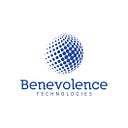4 ways to keep enterprise content management systems relevant_1
The experience of a civil servant is undergoing dramatic change. The rise of mobile, social, and cloud technologies has changed the way everyone works.
People want to be effective anytime, anywhere, from any device or application, which has created the need for easy access to content. At the same time, many legacy enterprise content management (ECM) systems have existed for a decade or more, and require major upgrades or replacements.
What is Enterprise Content Management (ECM)?
Do you have any idea What is enterprise content management meaning? Simply put, ECM is the framework for automated digital document management: the collection, storage, management, organization, and distribution of documents and files so that they are accessible to the appropriate people and processes in your systems.
Architect for a different era, these systems have been left behind by the current working and computing environment. It has increased pressure on government IT teams to update their ECM strategies or address control, security, and compliance issues that arise when bringing consumer technology into a public sector IT environment. Are Developing a new approach to ECM will help agencies overcome shadow IT and adhere to required standards.
To meet the needs of both the federal workers and the compound mandate, IT managers need to ensure that their ECM strategy meets these four goals.
- Support new ways of working:
Many ECM projects fail due to poor user adoption. Employees do not make purchases because the systems are cumbersome, intuitive, or lack cooperation for sharing and remote access. Today’s workforce is made up of apps like Instagram, Snapchat.
Modern ECMs should adapt to the applications and devices that people use daily, taking cues from users’ apps so that the user experience is fresh, engaging, and intuitive. Thirty-seven percent of the world’s workforce is projected to be mobile in 2015 — and this fact is also felt in the public market. Highly mobile, highly connected employees want IT solutions that allow them to work regardless of location, network, or device.
2. Prepare for an expanded enterprise:
Today’s enterprise is being reshaped by rapid development in integrated activities and information flow. Agencies are no longer the only ones. Instead, they often create an interconnected web of employees, contractors, suppliers, and circles. This makes the ability to share content and processes in the expanded enterprise essential for modern ECM. The legacy ECM system was designed when users and content lived behind firewalls on servers and PCs, but it is not possible to help today’s government workers. Modern ECMs need to support easy, controlled sharing of content and processes, inside and outside the agency.
